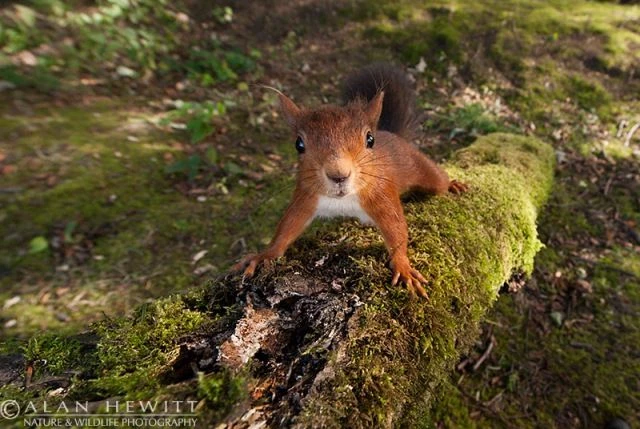
Partner Article
Two years of conservation success gives English reds real hope
Following three months of spring survey work in 289 different woodlands and gardens across northern England, analysis confirms that red squirrel range has remained stable over the last two years, bucking a trend of over a century of loss in England.
This is the fifth monitoring survey run by the Red Squirrels Northern England (RSNE) project over the last three years. Community volunteers and project staff found red squirrels in the same number of sites as during the autumn 2013 programme, despite seeing an increase of 9% in the number of sites with non-native grey squirrels. Increases in grey squirrel detection were expected following a mild winter and seemingly abundant wild nut and berry supply. This serves a as stark reminder that the future of the red squirrel on the English mainland is entirely in the hands of committed individuals, groups and organisations currently working together to conserve reds by managing intermingled non-native grey squirrel populations.
Especially interesting this spring are the new rash of red squirrel sightings in the northern Yorkshire Dales (Upper Swaledale) and North Pennines (Teesdale, County Durham) where red squirrels had not been detected since the project started in 2012. We hope local communities can help us learn more about the size and health of these potential populations over the next six months, and encourage people to report red squirrel sightings on our website at www.rsne.org.uk/sightings
In Central Northumberland, reds squirrels continue to fare extremely well where communities are working together to conserve them, for instance, at Pegswood Community Woods near Morpeth. Jean Mitchell of ‘Friends of Pegswood Community Woods’ said: “We have been feeding and monitoring our reds regularly and we have seen an increase this year with two new kits. We have had a lot of support from the local community and we will be starting our ‘Adopt a Red Squirrel’ scheme in September, and in South-East Northumberland, there are some fantastic colonies of reds in the eastern urban centres of Ashington, Cramlington and Bedlington.”
The conservation efforts and monitoring producing these fantastic results are supported by Biffa Award, the Heritage Lottery Fund, Nurture Lakeland, Furness Building Society, Forestry Commission and many other committed partners.
Nick Mason, RSNE Project Manager, said: “Our broad conservation community is growing ever more certain that this high quality science is reflecting the positive impact of sustained hard work. Hundreds of people working together, with appropriate investment, are conserving this beautiful animal for 2 million northern English residents to enjoy on their doorsteps. This investment must continue to maintain this success.”
The results (full report at www.rsne.org.uk/squirrel-monitoring-programme) continue to inform conservation effort across northern England and the monitoring programme will run again in spring 2015.
This was posted in Bdaily's Members' News section by Sue Bishop .
Enjoy the read? Get Bdaily delivered.
Sign up to receive our daily bulletin, sent to your inbox, for free.








 Apprenticeships: Lower standards risk safety
Apprenticeships: Lower standards risk safety
 Keeping it reel: Creating video in an authenticity era
Keeping it reel: Creating video in an authenticity era
 Budget: Creating a more vibrant market economy
Budget: Creating a more vibrant market economy
 Celebrating excellence and community support
Celebrating excellence and community support
 The value of nurturing homegrown innovation
The value of nurturing homegrown innovation
 A dynamic, fair and innovative economy
A dynamic, fair and innovative economy
 Navigating the property investment market
Navigating the property investment market
 Have stock markets peaked? Tune out the noise
Have stock markets peaked? Tune out the noise
 Will the Employment Rights Bill cost too much?
Will the Employment Rights Bill cost too much?
 A game-changing move for digital-first innovators
A game-changing move for digital-first innovators
 Confidence the missing ingredient for growth
Confidence the missing ingredient for growth
 Global event supercharges North East screen sector
Global event supercharges North East screen sector